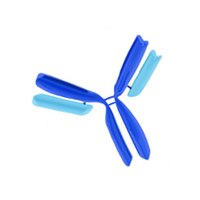Morphology, distribution and phenotype of polycystin kidney disease 2-like 1-positive cerebrospinal fluid contacting neurons in the brainstem of adult mice.
Orts-Del'Immagine, A; Kastner, A; Tillement, V; Tardivel, C; Trouslard, J; Wanaverbecq, N
PloS one
9
e87748
2014
Show Abstract
The mammalian spinal cord and medulla oblongata harbor unique neurons that remain in contact with the cerebrospinal fluid (CSF-cNs). These neurons were shown recently to express a polycystin member of the TRP channels family (PKD2L1) that potentially acts as a chemo- or mechanoreceptor. Recent studies carried out in young rodents indicate that spinal CSF-cNs express immature neuronal markers that appear to persist even in adult cells. Nevertheless, little is known about the phenotype and morphological properties of medullar CSF-cNs. Using immunohistochemistry and confocal microscopy techniques on tissues obtained from three-month old PKD2L1:EGFP transgenic mice, we analyzed the morphology, distribution, localization and phenotype of PKD2L1(+) CSF-cNs around the brainstem and cervical spinal cord central canal. We show that PKD2L1(+) CSF-cNs are GABAergic neurons with a subependymal localization, projecting a dendrite towards the central canal and an axon-like process running through the parenchyma. These neurons display a primary cilium on the soma and the dendritic process appears to bear ciliary-like structures in contact with the CSF. PKD2L1(+) CSF-cNs present a conserved morphology along the length of the medullospinal central canal with a change in their density, localization and dendritic length according to the rostro-caudal axis. At adult stages, PKD2L1(+) medullar CSF-cNs appear to remain in an intermediate state of maturation since they still exhibit characteristics of neuronal immaturity (DCX positive, neurofilament 160 kDa negative) along with the expression of a marker representative of neuronal maturation (NeuN). In addition, PKD2L1(+) CSF-cNs express Nkx6.1, a homeodomain protein that enables the differentiation of ventral progenitors into somatic motoneurons and interneurons. The present study provides valuable information on the cellular properties of this peculiar neuronal population that will be crucial for understanding the physiological role of CSF-cNs in mammals and their link with the stem cells contained in the region surrounding the medullospinal central canal. | 24504595
 |
Polycystin-2 expression and function in adult mouse lacrimal acinar cells.
Kaja, S; Hilgenberg, JD; Rybalchenko, V; Medina-Ortiz, WE; Gregg, EV; Koulen, P
Investigative ophthalmology & visual science
52
5605-11
2011
Show Abstract
Lacrimal glands regulate the production and secretion of tear fluid. Dysfunction of lacrimal gland acinar cells can ultimately result in ocular surface disorders, such as dry eye disease. Ca(2+) homeostasis is tightly regulated in the cellular environment, and secretion from the acinar cells of the lacrimal gland is regulated by both cholinergic and adrenergic stimuli, which both result in changes in the cytosolic Ca(2+) concentration. We have previously described the detailed intracellular distribution of inositol-1,4,5-trisphosphate receptors (IP(3)Rs), and ryanodine receptors (RyRs) in lacrimal acinar cells, however, little is known regarding the expression and distribution of the third major class of intracellular Ca(2+) release channels, transient receptor potential polycystin family (TRPP) channels.Studies were performed in adult lacrimal gland tissue of Swiss-Webster mice. Expression, localization, and intracellular distribution of TRPP Ca(2+) channels were investigated using immunocytochemistry, immunohistochemistry, and electron microscopy. The biophysical properties of single polycystin-2 channels were investigated using a planar lipid bilayer electrophysiology system.All channel-forming isoforms of TRPP channels (polycystin-2, polycystin-L, and polycystin-2L2) were expressed in adult mouse lacrimal gland. Subcellular analysis of immunogold labeling revealed strongest polycystin-2 expression on the membranes of the endoplasmic reticulum, Golgi, and nucleus. Biophysical properties of lacrimal gland polycystin-2 channels were similar to those described for other tissues.The expression of TRPP channels in lacrimal acinar cells suggests a functional role of the proteins in the regulation of lacrimal fluid secretion under physiological and disease conditions, and provides the basis for future studies focusing on physiology and pharmacology. | 21508103
 |









